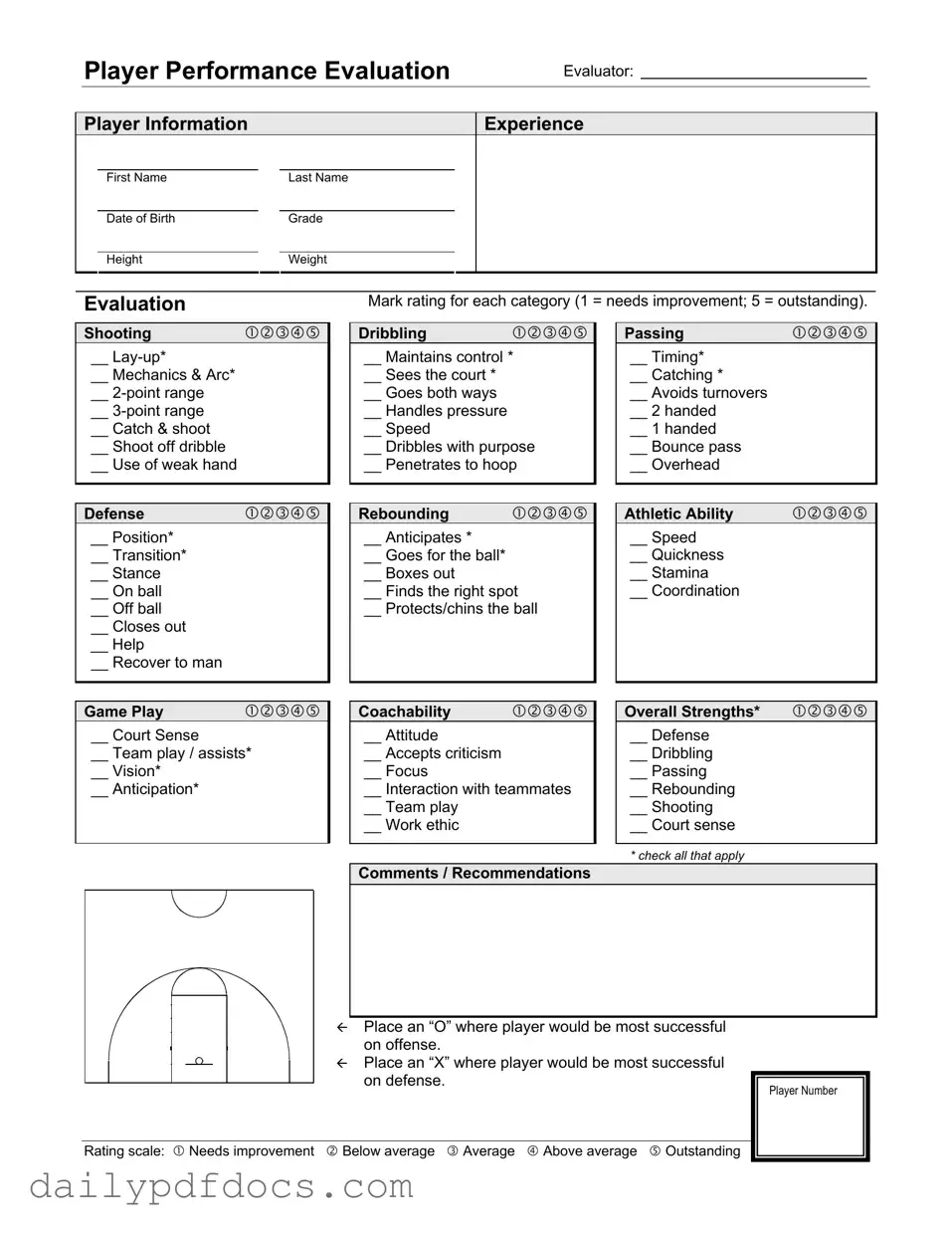What is the purpose of the Basketball Evaluation form?
The Basketball Evaluation form is designed to assess a player's skills and abilities in various aspects of the game. It provides a structured way for evaluators to rate players on their shooting, defense, dribbling, rebounding, passing, athletic ability, game play, and coachability. This information helps coaches identify strengths and areas for improvement.
Who fills out the Basketball Evaluation form?
The form is typically filled out by coaches or evaluators who have observed the player's performance during practices or games. This ensures that the evaluation is based on firsthand observations and provides an accurate assessment of the player's skills.
What does the rating scale mean?
The rating scale ranges from 1 to 5, where 1 indicates that the player needs improvement and 5 signifies outstanding performance. Each category is evaluated based on this scale, allowing for a clear understanding of the player's abilities in specific areas.
What categories are included in the evaluation?
The evaluation covers several categories: Shooting, Defense, Dribbling, Rebounding, Passing, Athletic Ability, Game Play, and Coachability. Each category includes specific skills that can be rated, providing a comprehensive overview of the player's performance.
How are strengths and weaknesses identified?
Evaluators can identify strengths and weaknesses by reviewing the ratings given in each category. Players who receive higher scores in specific areas will have those noted as strengths, while lower scores will highlight areas needing improvement. This helps in tailoring training and development plans.
What additional comments can be included?
Evaluators can provide comments or recommendations in the designated section of the form. This can include insights on the player's potential, specific skills to work on, or suggestions for positions where the player may excel. Such feedback is valuable for both players and coaches.
How can the form help in player development?
The Basketball Evaluation form serves as a tool for both players and coaches. By identifying strengths and areas for improvement, it helps coaches develop targeted training programs. Players can focus on specific skills to enhance their game, leading to overall improvement and growth.
What should be done with the completed evaluation form?
Once the evaluation form is completed, it should be shared with the player and their parents or guardians. This transparency fosters communication about the player's performance and development goals. Coaches can also use the information to inform team strategies and individual player development plans.
Can the evaluation form be used for different age groups?
Yes, the Basketball Evaluation form can be adapted for various age groups. While the categories and skills remain relevant, the expectations for performance may vary. Coaches can adjust the evaluation criteria to suit the developmental stage of the players being assessed.

